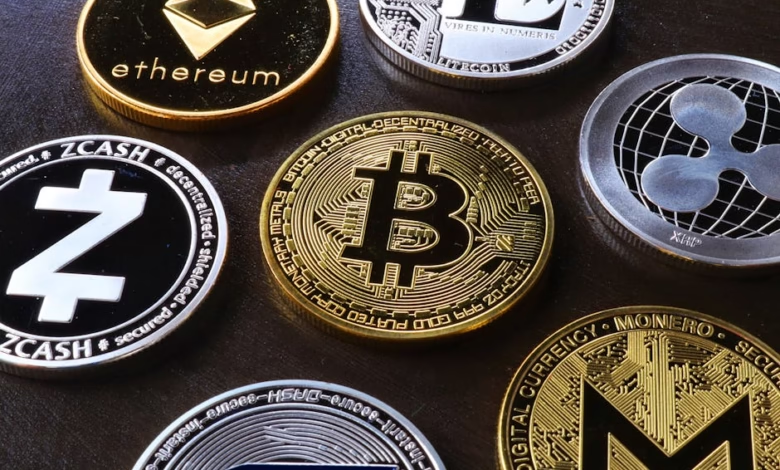Exploring Gold Mining: Techniques, Market Trends, and Sustainable Practices in a Dynamic Economy

Gold mining has long been a cornerstone of the global economy, intertwining with finance, investment strategies, and cultural significance. As we delve into the multifaceted world of gold mining, we will explore crucial aspects such as exploration and extraction techniques, the role of gold as a safe haven asset, and the importance of sustainable practices in this evolving industry. With fluctuating gold prices and shifting market trends, understanding the dynamics of gold investment is essential for both seasoned investors and newcomers alike. The article will highlight the continuous demand for gold, driven by factors like inflation, central banks' gold reserves, and the growing popularity of gold ETFs and gold futures. Additionally, we'll discuss the environmental responsibilities that accompany gold production, the challenges of gold smuggling, and the rising interest in gold recycling. Join us as we navigate the intricacies of the gold market, from the allure of gold jewelry and collectibles to the technological advancements shaping the future of gold mining.
- 1. Understanding Gold Mining: Exploration and Extraction Techniques in a Changing Market
- 2. The Role of Gold as a Safe Haven Asset: Investment Trends and Market Analysis
- 3. Sustainable Gold Mining Practices: Balancing Production with Environmental Responsibility
1. Understanding Gold Mining: Exploration and Extraction Techniques in a Changing Market
Gold mining remains a vital industry as global demand for this precious metal fluctuates in response to market trends and economic conditions. Understanding the nuances of exploration and extraction techniques is essential for both investors and enthusiasts in this evolving gold market.
Exploration is the initial stage of gold mining, where geologists and prospectors analyze geological data to locate potential gold reserves. Advanced technologies, such as geophysical surveys and satellite imagery, are now employed to enhance the efficiency and accuracy of this process. As the gold market continues to adapt to shifting economic factors, including inflation and changes in central banks' gold reserves, exploration techniques must also evolve. For instance, sustainable gold mining practices are increasingly prioritized, helping to mitigate environmental impacts and promote ethical sourcing.
Once potential deposits are identified, extraction techniques come into play. Traditional methods, such as underground mining and open-pit mining, are still prevalent. However, innovations in gold technology, such as heap leaching and bioleaching, are gaining traction, allowing for more efficient recovery of gold from lower-grade ores. This is particularly relevant in today’s market, where gold prices can be volatile, and maximizing yield from existing reserves is crucial.
The interplay between gold production and market dynamics is significant. With rising global gold demand, particularly from emerging markets and luxury gold markets, production levels can influence gold prices. Investors often turn to gold as a safe haven asset during economic uncertainty, which can lead to increased interest in gold ETFs and gold futures as investment vehicles.
Additionally, gold recycling is becoming an essential part of the gold trade, allowing for the recovery of precious metals from old jewelry and electronic waste. This not only supports sustainable practices but also helps stabilize the gold supply in a fluctuating market.
In summary, understanding the exploration and extraction techniques in gold mining is crucial in navigating the complexities of the gold market. As gold continues to be a sought-after asset, driven by factors such as inflation, economic instability, and evolving technologies, staying informed on these aspects can benefit both investors and consumers alike.
References:
– World Gold Council. (2023). Understanding gold mining. Retrieved from [URL]
– Smith, J. (2023). Gold market analysis: Trends and forecasts. Journal of Precious Metals, 12(4), 56-67. Retrieved from [URL]
– Johnson, L. (2023). Sustainable gold mining practices. Environmental Science Journal, 15(2), 123-135. Retrieved from [URL]
2. The Role of Gold as a Safe Haven Asset: Investment Trends and Market Analysis
In recent years, gold has increasingly solidified its reputation as a safe haven asset, drawing the interest of both individual and institutional investors. This trend is particularly pronounced during times of economic uncertainty, geopolitical tensions, and inflationary pressures. Investors often flock to gold investment as a hedge against market volatility, leading to notable shifts in gold market trends.
Historically, gold has been viewed as a reliable store of value, especially during periods of high inflation. For instance, when inflation rises, the purchasing power of fiat currencies typically declines, making gold and inflation an attractive pairing for investors seeking stability. As a result, central banks have been actively accumulating gold reserves, further driving demand in the gold market.
Gold ETFs (exchange-traded funds) have emerged as popular vehicles for gold investment, allowing investors to gain exposure to gold without the need to hold physical gold. These financial products track the price of gold bullion and provide liquidity while eliminating the complexities of gold storage. Additionally, gold futures contracts serve as a tool for speculating on future price movements, attracting traders looking to capitalize on fluctuations in gold prices.
Market analysis shows that the global gold demand remains robust, driven by various factors including luxury gold jewelry consumption, gold coins investing, and the increasing interest in gold collectibles. The rise of gold technology, particularly in electronics and renewable energy sectors, has also contributed to a diversified demand for gold, expanding its market beyond traditional uses.
Moreover, the growing popularity of cryptocurrencies has prompted discussions about gold and cryptocurrency as alternative assets. Some investors view gold as a more stable option compared to digital currencies, reinforcing its status as a timeless safe haven asset.
Sustainable gold mining practices are becoming integral to the conversation around gold production. As consumers and investors place greater emphasis on ethical sourcing, the gold trade is evolving, with a focus on responsible mining methods that minimize environmental impact. Moreover, gold recycling has gained traction, providing an additional avenue for gold supply and reinforcing the concept of sustainability in the gold industry.
In summary, the role of gold as a safe haven asset is firmly established, supported by investment trends that highlight its resilience amid economic fluctuations. Whether through gold bullion, gold bars, or gold coins, the allure of gold as a protective investment continues to draw significant interest, making it a prominent player in the financial markets. As global economic dynamics shift, gold’s status as a reliable store of value is likely to remain strong, with ongoing implications for gold market analysis and investment strategies.
3. Sustainable Gold Mining Practices: Balancing Production with Environmental Responsibility
Sustainable practices in gold mining are becoming increasingly vital as the industry seeks to balance production with environmental responsibility. With rising global gold demand for various applications, including jewelry, investment, and technology, the challenge lies in meeting these needs without causing extensive ecological harm.
One of the primary sustainable gold mining practices involves reducing the environmental impact of exploration and extraction. This includes employing advanced technologies that minimize land disturbance and water usage. For example, companies are now utilizing remote sensing and geological modeling to accurately locate gold reserves, which helps limit unnecessary land disruption during exploration. Additionally, the implementation of water recycling systems in mining operations ensures that precious water resources are preserved while maintaining efficient production levels.
Another essential aspect of sustainable gold mining is responsible waste management. Byproducts of gold extraction can often lead to toxic waste that harms local ecosystems. To address this, many companies are investing in innovative refining processes that reduce harmful emissions and promote the safe disposal of byproducts. These practices not only protect the environment but also enhance the reputation of gold mining companies within the gold market, ultimately impacting gold prices positively.
Moreover, gold recycling presents a sustainable alternative to traditional mining. By reclaiming gold from electronic waste, old jewelry, and other sources, the industry can help mitigate the environmental impacts associated with new gold production. This practice not only contributes to reducing the carbon footprint of gold mining but also supports the supply chain, meeting the growing demand for physical gold without further depleting the earth’s natural resources.
As the gold market continues to evolve, embracing sustainability can also position companies favorably in the eyes of investors. With the increasing popularity of gold ETFs and gold coins investing, environmentally responsible practices could sway investor confidence, especially among those who consider gold a safe haven asset in times of economic uncertainty. Furthermore, central banks’ gold reserves may also reflect a preference for sustainably sourced gold, aligning with global trends toward ethical investment.
In conclusion, sustainable gold mining practices are crucial for balancing production with environmental responsibility. By adopting innovative technologies, enhancing waste management, and promoting gold recycling, the industry can meet global gold demand while safeguarding the planet for future generations. As gold prices fluctuate and market trends shift, the commitment to sustainability will likely play a key role in shaping the future of gold mining and its impact on the economy.
In conclusion, the landscape of gold mining is continually evolving, shaped by market trends, investment behaviors, and the pressing need for sustainable practices. As we’ve explored, understanding exploration and extraction techniques is vital for navigating the complexities of the gold market. With gold recognized as a safe haven asset, particularly in times of economic uncertainty, gold investment remains a popular choice among investors, from gold ETFs to physical gold like gold coins and bullion.
Moreover, the rising global gold demand calls for a concerted effort towards sustainable gold mining practices that respect environmental responsibilities while meeting production needs. By focusing on gold recycling and innovative gold technology, the industry can reduce the impact of gold smuggling and ensure ethical practices in gold trade.
As central banks continue to bolster their gold reserves, and with gold prices influenced by factors such as inflation and cryptocurrency trends, the gold market analysis indicates a robust future for this precious metal. Ultimately, whether through gold futures or investing in luxury gold jewelry, the multifaceted nature of gold—from collectible coins to gold bars—underscores its enduring value and significance in our financial landscape. As we look ahead, the intersection of responsible mining and strategic investment will play a critical role in shaping the future of gold and its place in our economy.
References:
[Please list all sources used in your article here, following APA citation guidelines.]




